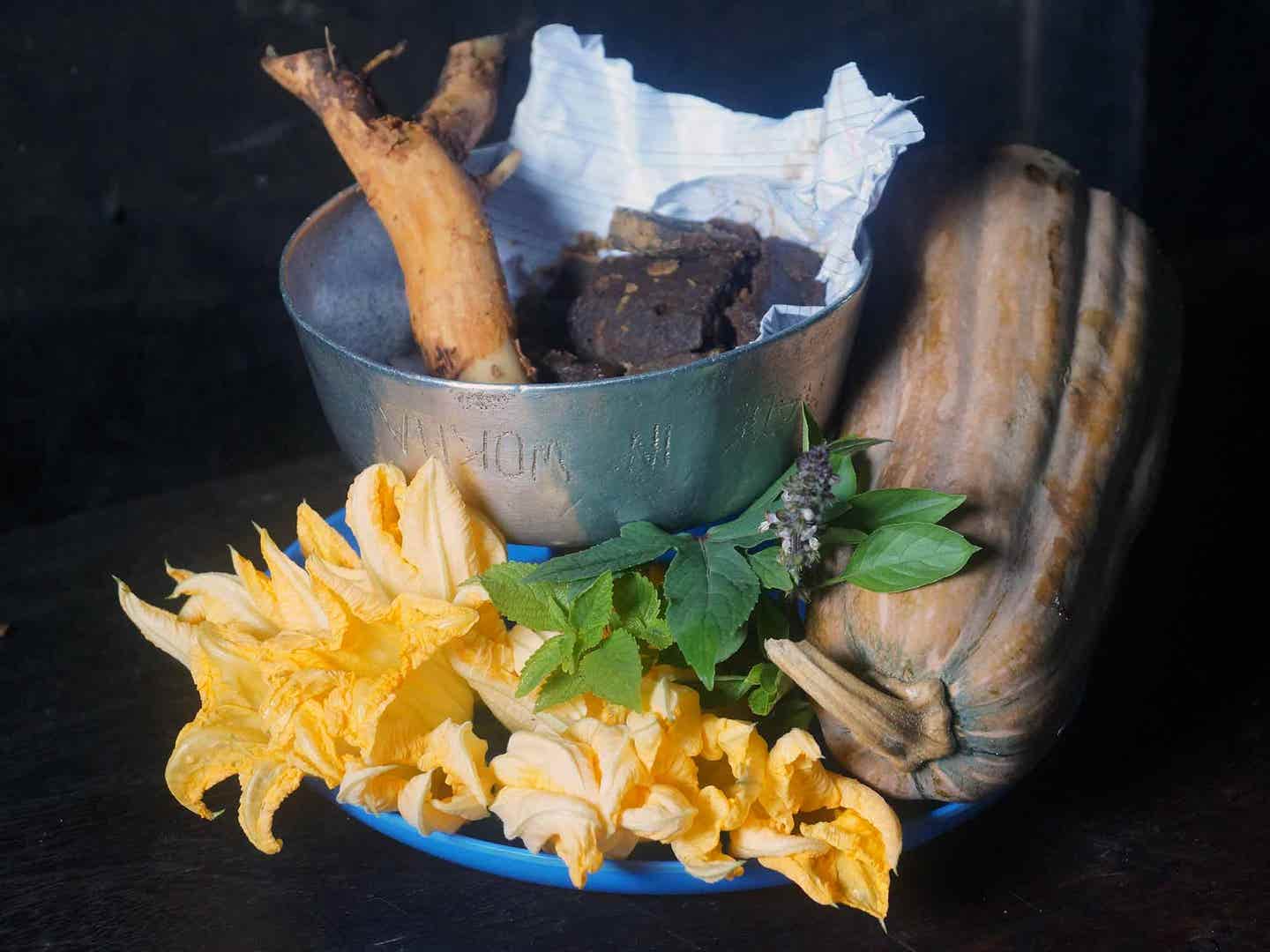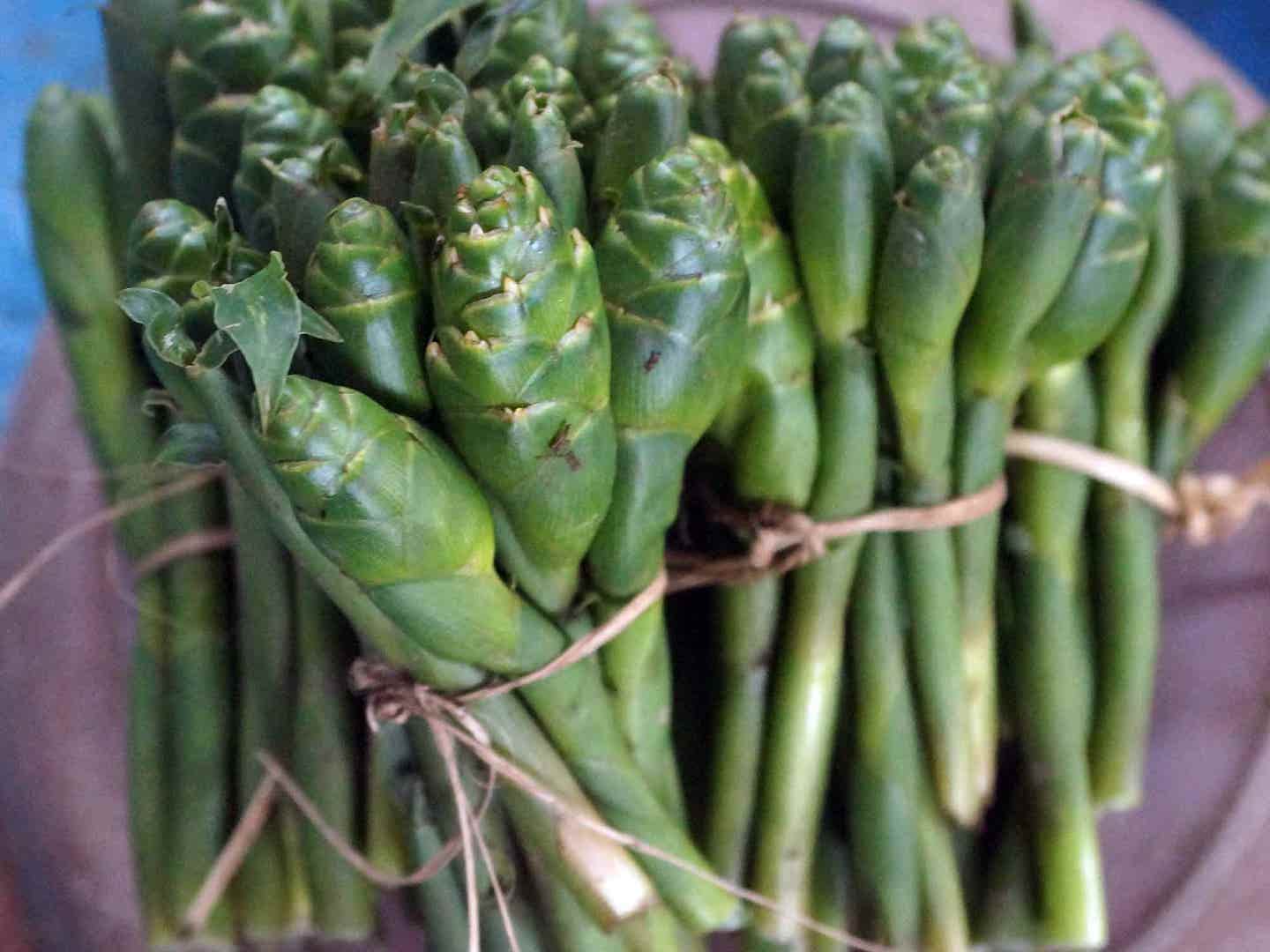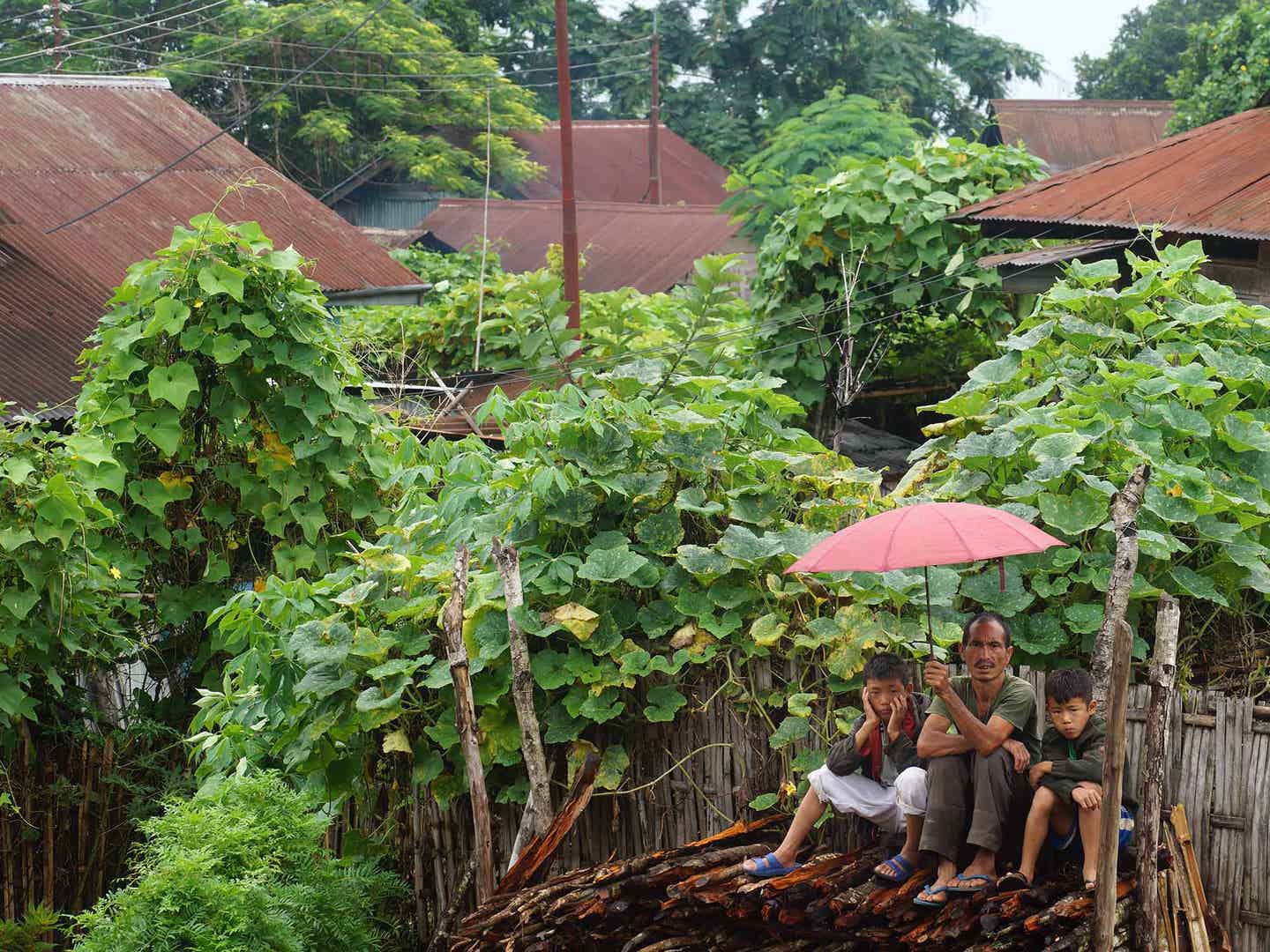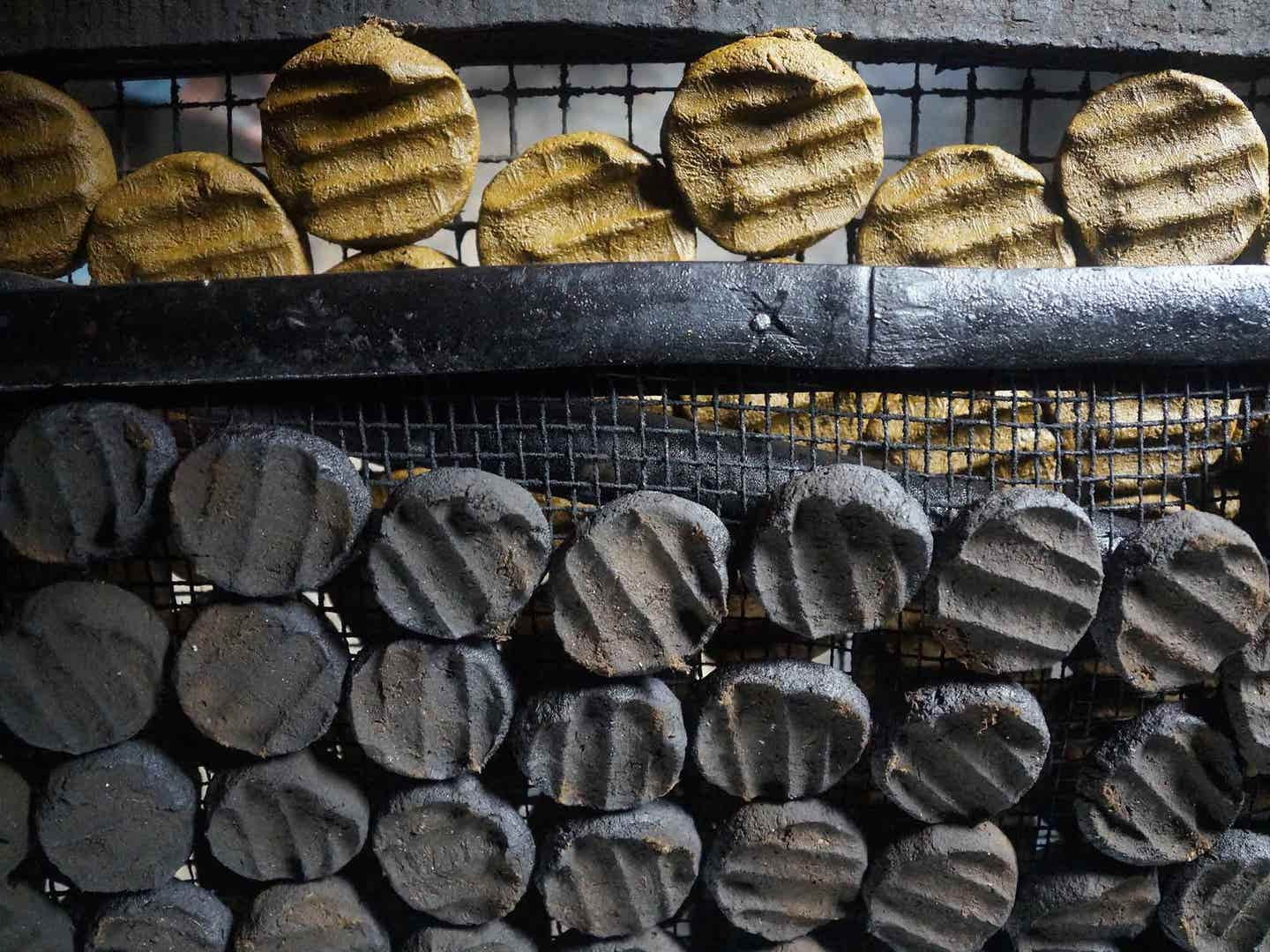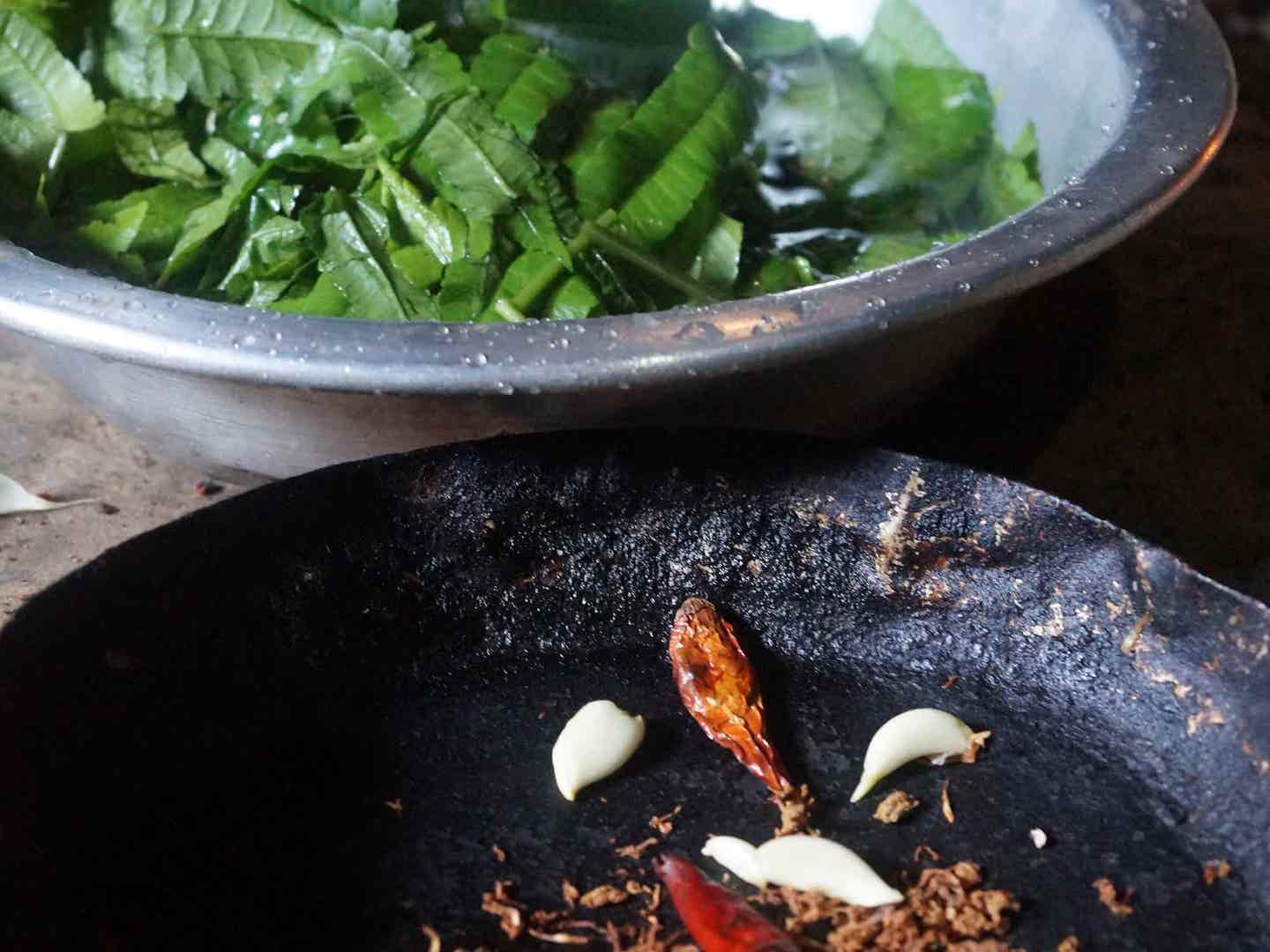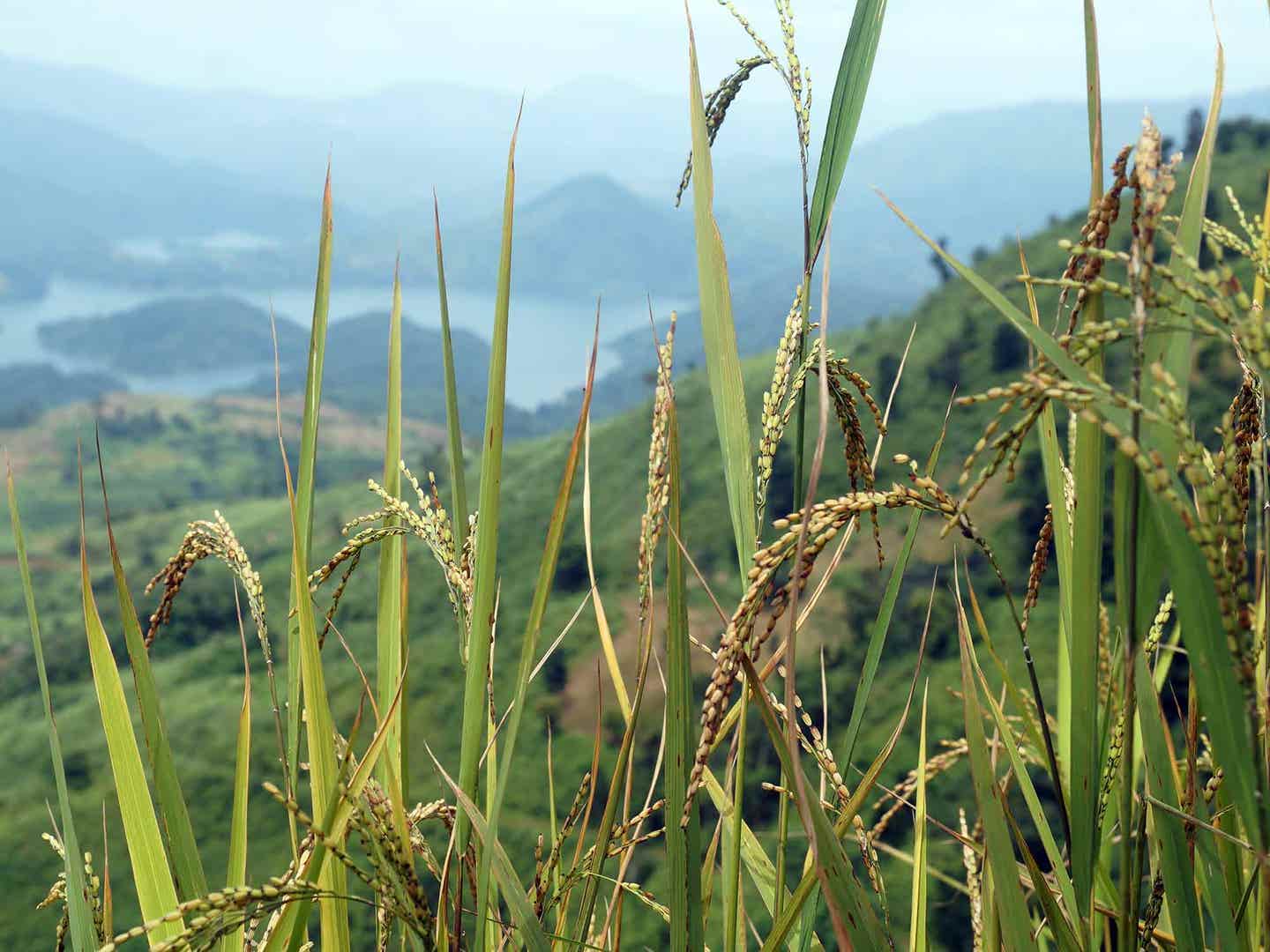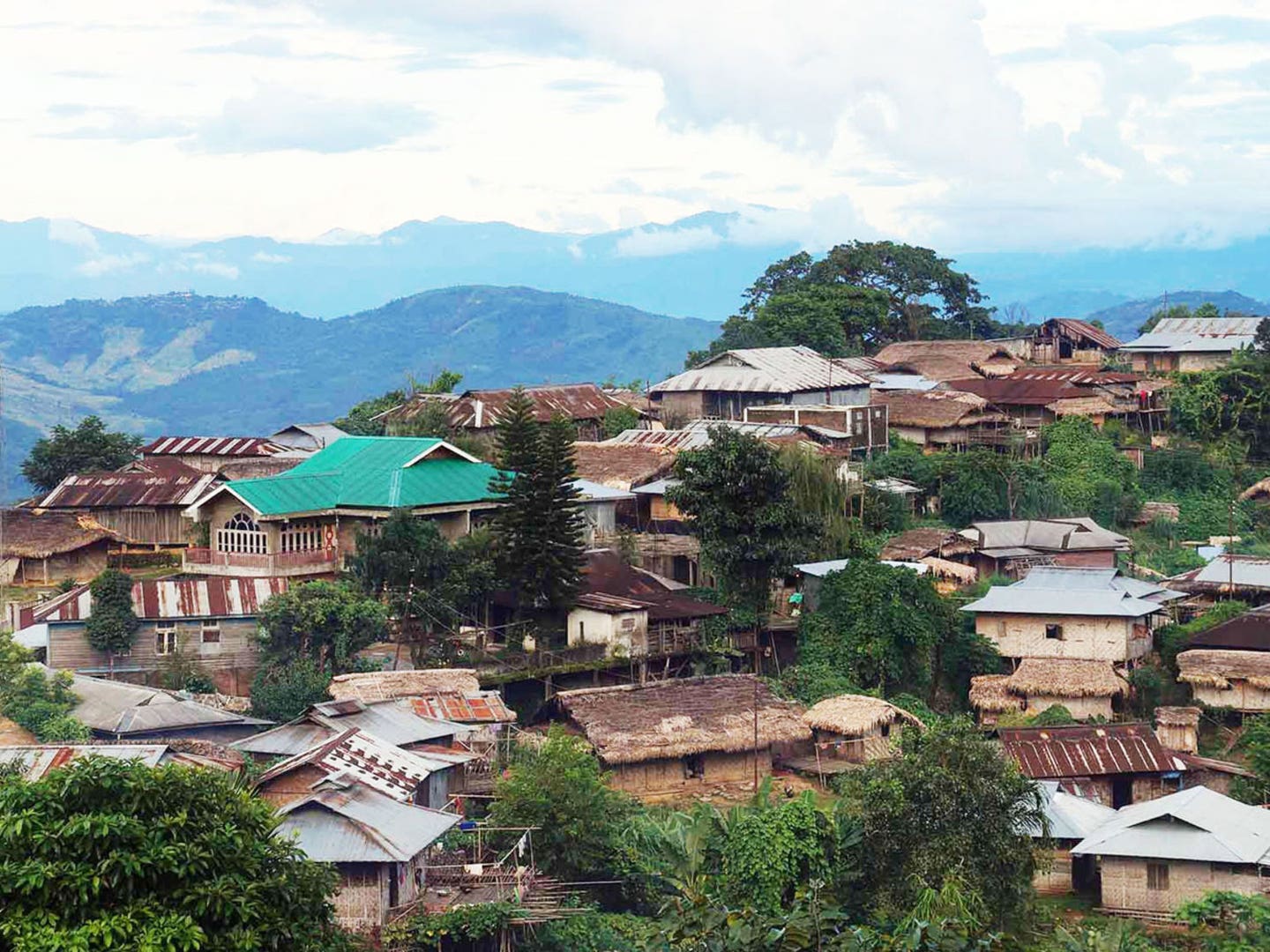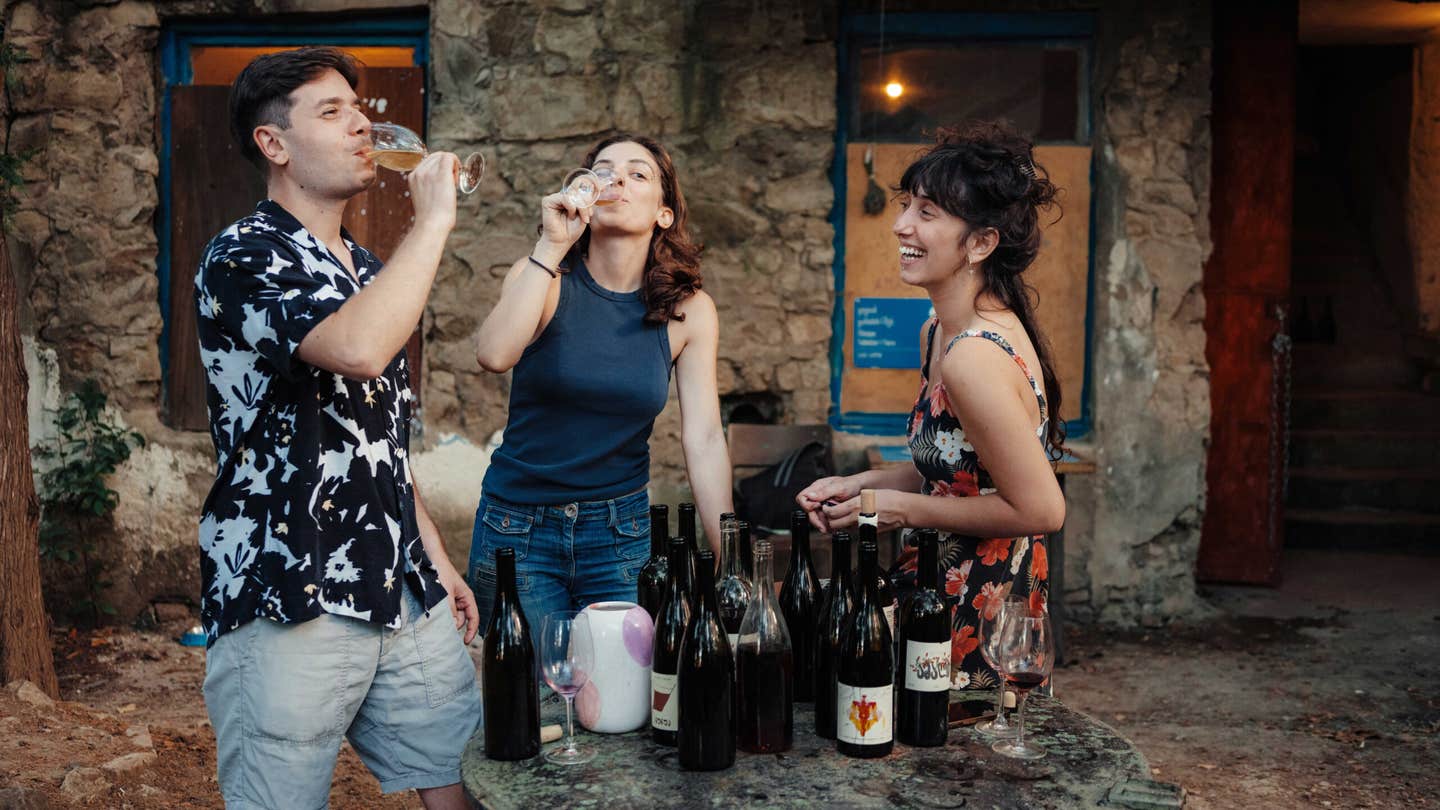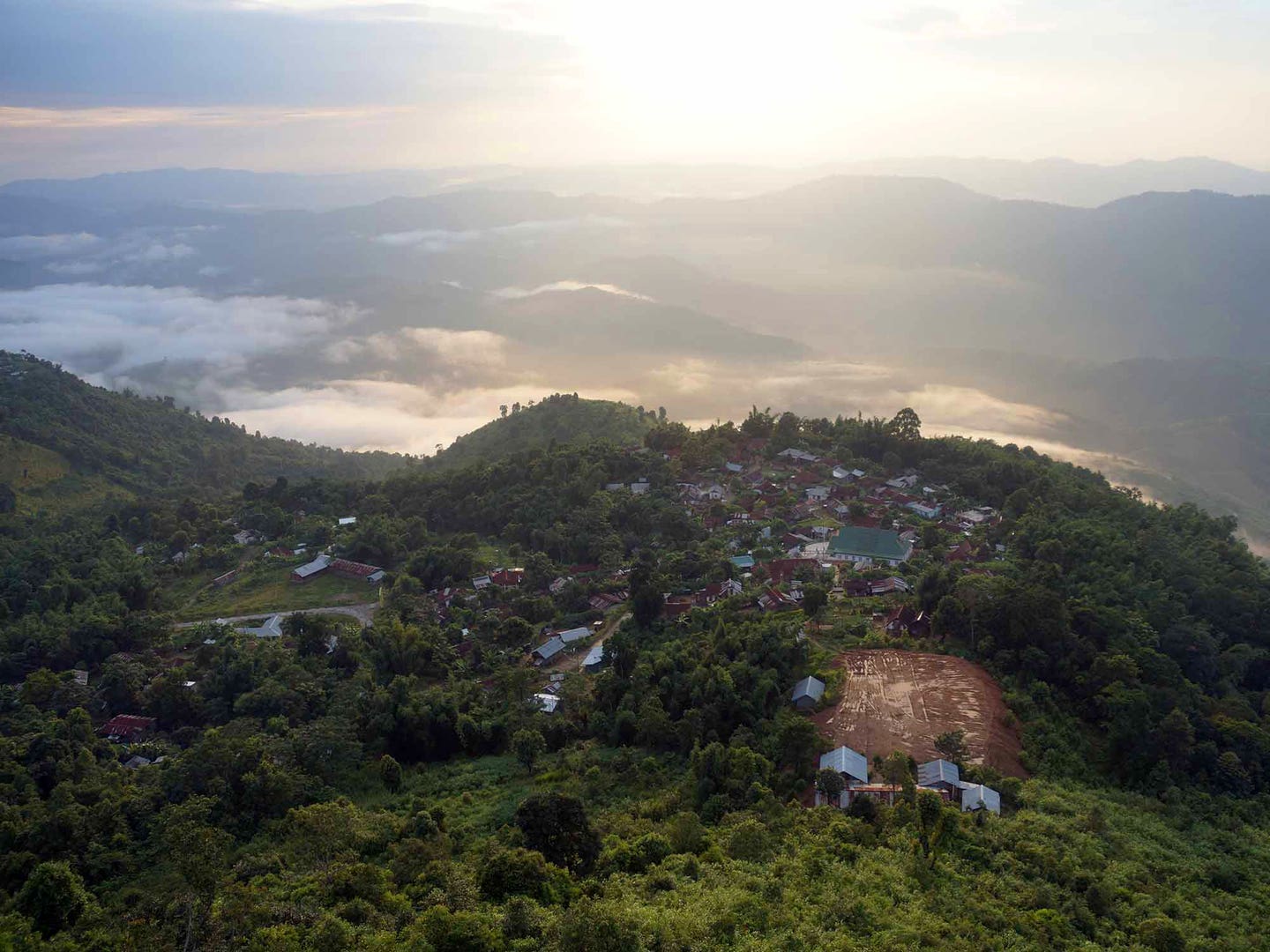
Feasting on Locusts in Nagaland
The border hills of India hide tribes who cook food unlike anything in South Asia
In several of the dialects spoken among the Naga tribes, who live in remote hilltop villages along India’s northeastern border with Myanmar, there is no single word for ‘hello.’ Instead, people greet each other by asking, ‘Have you eaten?’
By the time I learned this, I’d already spent three weeks traveling around the Indian state of Nagaland, bumping along muddy tracks waterlogged from near-nightly thunderstorms, dipping into banks of fog, and rounding blind corners over deep valleys bursting with bamboo and bananas and giant ferns. I’d tasted winged beans in a tar-black paste of fermented mud crab and sesame seed, snakehead eels electric with the numbing zap of Sichuan peppercorns, and a thick curry of pig intestines cooked in blood over the open fire that is the center of every Naga kitchen and home.
Yes, I had most definitely eaten.
I first tasted Naga food about three years earlier when a friend's sister-in-law invited me over for a dinner of home-cooked dishes from her native state. She prepared smoked beef, pungent with a fermented soy paste called axone, smoked pork with fermented bamboo shoots, and fresh pork in anishi, a black gravy made from pounded and smoked yam leaves, all served with heaping mounds of rice. These were bold, confrontational flavors and textures I'd never associated with India.
Until recently, few people outside India’s northeastern corner could tell you anything about Naga cooking. In Mumbai, where I’ve lived for the last four years, this is still true. In Delhi, where Naga people move in significant numbers to study and work, a few small restaurants now serve classics of the Naga arsenal and have started to catch the attention of a larger population that’s increasingly attuned to the Subcontinent’s wealth of regional cuisines.
Ethnically closer to their ancestors in China and northern Burma than to anyone on the Subcontinent, the Naga are still viewed with suspicion by many people in mainland India. Young people who move to cities like Delhi often meet with discrimination, verbal abuse, and even physical violence. That’s left their food to play cultural ambassador—an unexpected one in the Indian cultural milieu, where consumption of meat is so often a subject of controversy. Naga cuisine isn’t a secret anymore.
The Nagas migrated to these hills about two millennia ago, though the absence of any written history makes it virtually impossible to say exactly when or from where. According to one origin story, probably apocryphal, the Naga tribes migrated west to evade conscription as forced labor in the construction of the Great Wall of China. The Naga predilection for fermentation and smoking to preserve food, the story goes, has its origins in that long journey. And though they’ve long-since traded headhunting for Baptism and their native dress for Western clothing, even now you’ll rarely find a refrigerator in a Naga village kitchen. Instead, you’ll see squares of beef skin and skewers of pork slowly desiccating over an always-burning open fire.
Nagaland Ingredients
Fresh produce from the gardens of New Riphyim: squash blossoms and sweet gourd, lemon balm, basil, fresh cinnamon bark, and unrefined cane sugar, a Lotha specialty.
I came to Nagaland for the first time one year after that initial meal, arriving by train from the west in the shambolic border town of Dimapur, the entry point for the hill country. I’d come on assignment for a Mumbai-based travel magazine, for which I’d proposed to explore the ins and outs of the local cooking, but within a few days I learned, much to my personal pleasure and professional dismay, that actually there is no such thing as Naga food. The Nagas themselves are really a collection of 36 sub-tribes scattered across the faintly drawn boundary that separates India from Myanmar. Over the course of time, each tribe, and in some cases each village, developed its own unique way of speaking, dressing, and, of course, cooking.
"We Semas make the best axone," my friend Lilian told me on that first visit to Dimapur, where she runs a pair of bars, two years back. A Mumbai-based friend from the Ao tribe, named Al, told me about his community's more subtly flavored dishes, things like anishi and a meat-and-pounded-rice porridge called amursu, just on the soupy side of a Chinese congee. He told me that the Angami "eat anything that moves"—an exaggeration, but only barely. Of Konyak food, Lilian would only say, "it sucks."
Tribal rivalries notwithstanding, Lilian and Al and any number of other Naga friends all agreed that Lothas cook the most sophisticated food. They're especially famous for the quality of their bamboo, an essential ingredient of all Naga cooking, and particularly for their use of the mild tender shoots from a variety called vapüu (the Lotha language recognizes 10 kinds of bamboo).
No part goes unused. The round, pale-green bases of the shoots (they look like curtain rings) are hacked off with machetes and pulverized, then pressed of their juice, which is left to ferment into an opaque white vinegar that lasts for years. The leftover pulp is stored and fermented in jars. The tender tops of the shoots, the shape of antique telescopes, can be shredded, pressed and fermented, then sun-dried into fine brown threads that keep indefinitely, or soaked in ashy water to leach out their bitterness, before being quartered and boiled, sometimes as a plain vegetable side dish, sometimes with meat (the mild, vegetal crunch went nicely in a collagenous stew of beef trotters).
Fresh ginger flowers
Bunches of fresh ginger flowers, which are only in season during the late monsoon, for sale at Dimapur’s Wednesday market.
On my second visit to Nagaland in September of this year, at the tail end of the rainy season, I went into the Lotha districts with Steve Odyuo, who runs a wildlife conservation NGO in the area called Natural Nagas. In Nagaland, the rainy season is also the time for landslides and leeches. It’s also, Steve told me, the time for the bamboo shoots. My timing was perfect.
Steve and I met in Dimapur and spent the better part of a day driving to New Riphyim, a small congregation of tin-capped houses perched on a forested ridge over the mighty Doyang River. Herb gardens, replete with lemon balm and spear-shaped Naga coriander and three varieties of basil, pushed through the loose weave of bamboo fences. Cinnamon and star fruit trees threw shade over the low-slung houses.
We rolled into town around 11 a.m. and went directly to the home of the villager Yanpothung Odyuo, who had already started preparing our lunch. An earthenware pot filled with smoked beef, dried fish, bitter eggplants, and a paste of roasted black sesame seeds gurgled over the coals. Three tubes of bamboo, filled with water and black tea leaves, angled up out of the flames: homemade kettles. On a plate set on the packed dirt floor, Yanpo had combined pieces of fresh river fish, bought earlier that day, with dry fermented bamboo shoot, green chili, and a dried herb called hantserap, which had the bright green taste of pure chlorophyll. He stuffed the marinated fish into another hollow of bamboo, corked the top with ginger leaves, and placed it over the fire to steam in the moisture released from the wood.
“When I was a child in the 50’s, food was often scarce,” Yanpo said, recalling the difficult years immediately after India’s independence in 1947. When the British left the Subcontinent and drew their border through the Naga hills, they cast half of the Nagas into the new state of India, very much against their will, sparking a bitter war between the Indian government, which wanted to maintain its new and already embattled territorial integrity, and the Naga guerillas, who wanted a state of their own. Though the conflict has cooled considerably in recent years, some insurgent factions continue to patrol the jungle, and the Indian military maintains a significant, and much resented, presence across the state.
“We lived on maize and millet and jungle leaves, and when we did get meat, the whole community would share it, so we could have it maybe two or three times per month,” Yanpo said. Today, improved infrastructure means that barely a meal passes without chicken, pork, beef, fish, or, on days when the farmers get lucky, wild game, which is still distributed equally among the villagers.
After the beef had been boiling for an hour, Yanpo added a few tablespoons of fermented bamboo juice, the primary source of acidity in Naga cooking—“if you add it too soon, the meat will become tough,” Steve explained—then a handful of dried leaves from a local basil variety with a strong medicinal finish. The beef came out of the pot as dark and viscous as tar, and tasted of smoke and sesame, with a bitter bite from the basil and eggplants, a rising heat from the chilies, and mushroom-like funk from the bamboo. The fish, which came off the fire some 40 minutes later, was a delicate antidote, its sweet flesh infused with the scent of fresh bamboo—probably the mildest Naga dish I’ve tasted.
The View From Nagaland
New Riphyim village
Pumpkin and squash vines throw shade over the narrow lanes between houses in New Riphyim village.
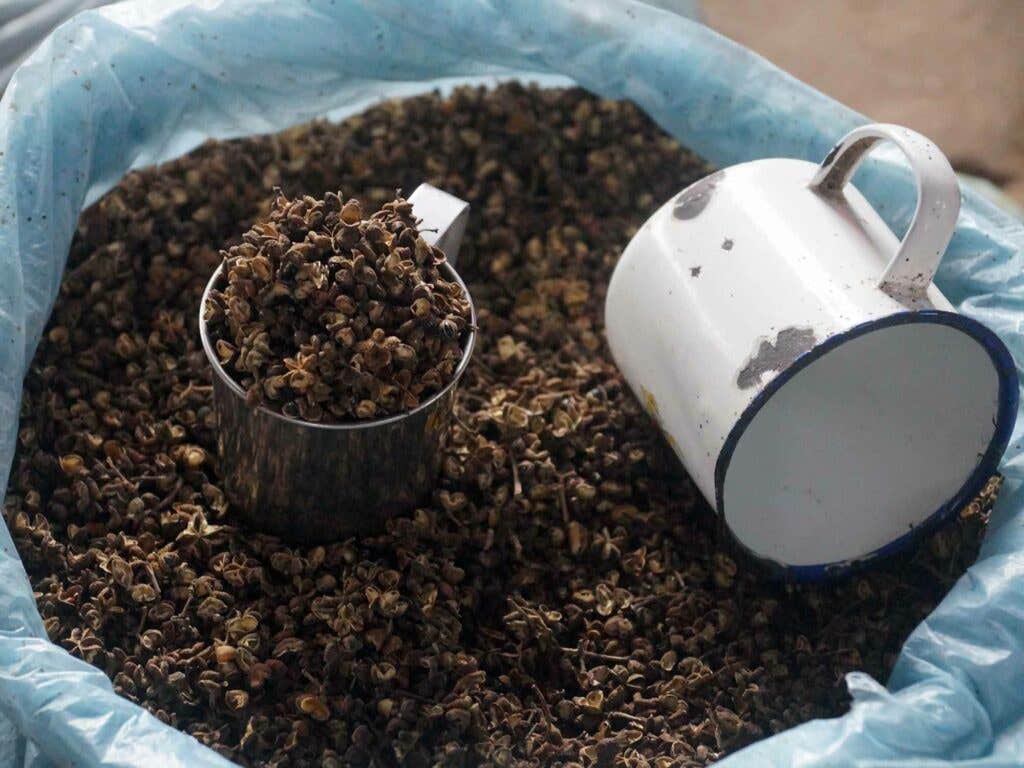
Anishi Patties
Patties of anishi at different stages of smoking over a fire in the Ao village of Süngratsü, which produces much of the anishi sold in markets around Nagaland. The dark, coal-like patties on top have been smoking for about five days and are nearly ready for use.
Dry bamboo shoot, red chile, and fresh garlic
In New Riphyim, dry bamboo shoot, dry red chili, and fresh garlic from the kitchen garden are lightly roasted over an open fire before mixing with raw jungle ferns.
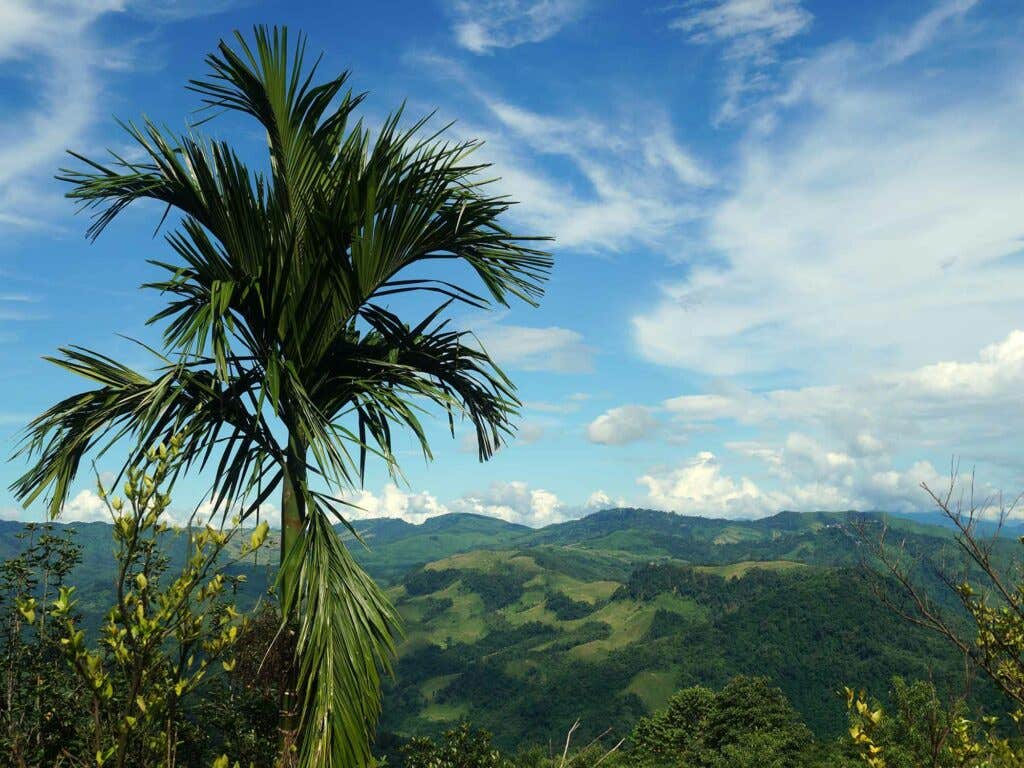
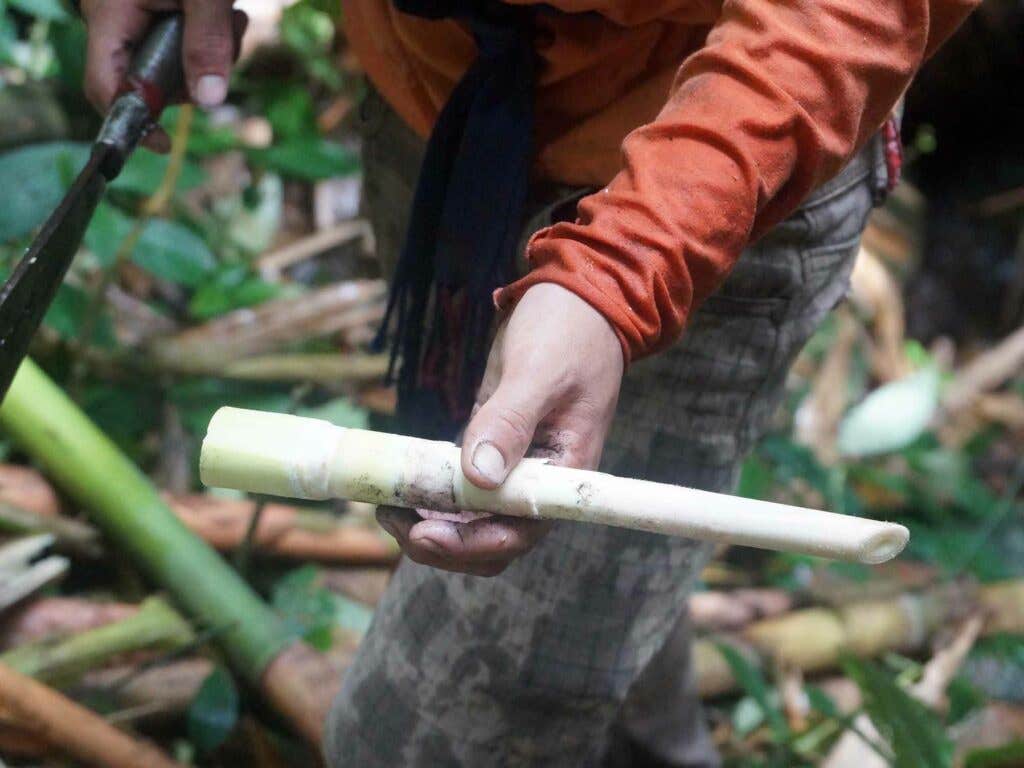
Rice
Rice, ready for harvest, on the steep slopes between New Riphyim village and the lakes formed by the Doyang hydro-electric project, built in the 1980s. Fields like these are cultivated for two consecutive years, then left fallow for as many as ten.
A Naga Village
Like most Naga villages, the Konyak settlement of Shiyong is built on a high ridge, overlooking shifting fields and dense jungle.
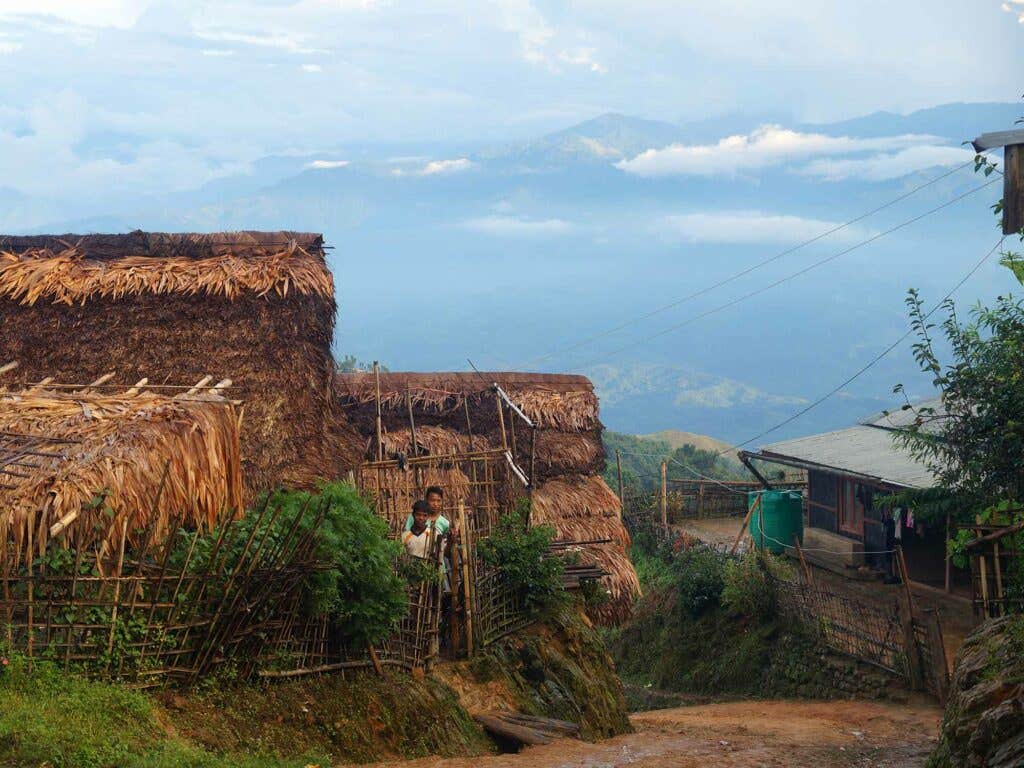
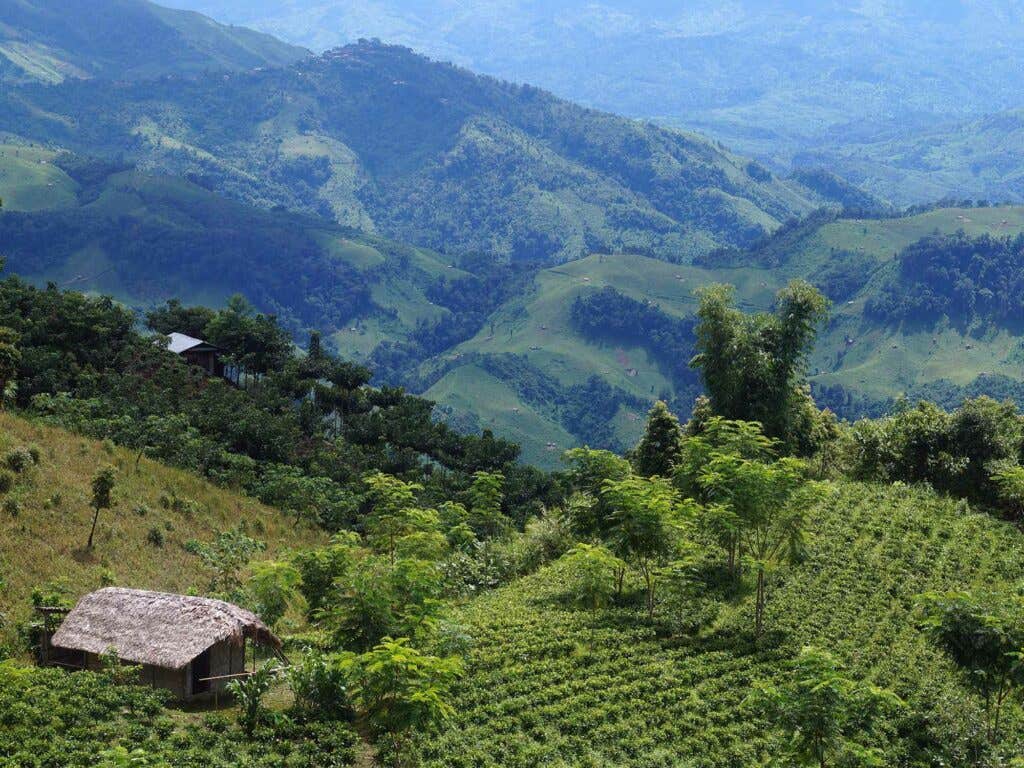
The next day, Steve and I went to the home of Yantsao Lotha, a teacher in the village, who told us about his school days back in the late 1960s, when he would trudge five hours up the road to Wokha, the nearest town (there were no public vehicles then), often carrying 15 kilos on his back. “Whatever we had in the village we took to town,” he said, “we couldn’t afford to buy our rice there and we couldn’t get the ingredients we wanted.”
Things have changed since Yantsao and Yanpo were kids. For many Nagas, the future lies not in the hope of independence as it did for their parents’ generation, but in the big cities of mainland India. Some return home after their schooling; many others do not. And while it’s certainly easier to get village ingredients in Naga towns than it was before, if you live in India, you have to bring your ingredients from home, just as Yantsao did 50 years back.
Naga friends who have studied away from the hills and lived in college dorms, have told me time and again, with good-humored laughs, about the complaints they got from Indian neighbors when they cooked with the pungent, half-rotten ingredients that their parents sent down. Nagas in the towns and villages alike have abandoned their traditional dress; they know nothing of the animist faith of their ancestors; and many of them have even stopped speaking their tribal dialects, learning instead to communicate in English and a creole called Nagamese that’s less than a century old. But they still come of age in the family kitchen and learn to cook the food of their ancestors. However far they scatter, Nagas take those flavors with them. As Yantsao proudly told me over lunch that day, he still sends packages to his children in Delhi and faraway Jammu, near the western border with Pakistan, filled with dried bamboo shoot, straight from the forest where he grew up.
On my last night in New Riphyim, after an evening of grasshopper-hunting and many tin mugs of cheap rum, I told Steve some of the things I’d heard about the Naga diet before coming.
“In most countries, when locusts come it causes a famine. In the Naga hills, we call it a feast,” a friend had said over drinks. “Of the things that fly, we don’t eat helicopters. Of the things with four legs—”
“—we don’t eat tables,” Steve interrupted with a roll of the eyes. “In towns they say these things as a sort of joke. Because it’s what people from outside expect.”
When I left New Riphyim, I went to other villages among other tribes. I tasted other dishes and, as Steve had promised, I did notice the difference: no two villages cooked in quite the same way. I tasted the unexpected everywhere I went and found that the reality of Naga food would always keep receding, that there would always be some other dish from some other village, hidden just over the next ridge. The hills, happily, still have their secrets.
Keep Reading
Continue to Next Story
